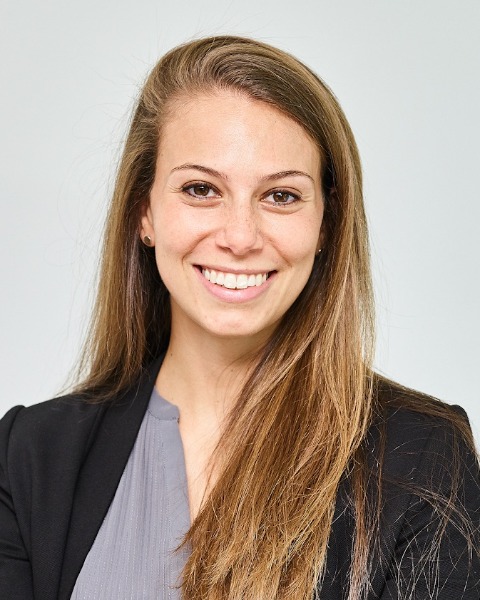Back
Endocrine/Head and Neck
Session: Endocrine/Head & Neck and HPB Virtual Poster Grand Rounds
V31: Assessing the Frequency of Deferrable Thyroid Nodule Biopsies to De-escalate Low-value Care
Wednesday, March 2, 2022
5:01 PM – 5:04 PM CST
Location: Zoom Meeting

Sara P. Ginzberg, MD
Resident Physician
Hospital of the University of Pennsylvania, Pennsylvania, United StatesDisclosure: Disclosure information not submitted.
Virtual Poster Presenter(s)
Participants should be aware of the following financial/non-financial relationships:
Sara p. Ginzberg, MD: Disclosure information not submitted.
Introduction: Thyroid nodules are common incidental findings which result in substantial healthcare utilization, although fewer than 1 in 10 harbors malignancy. Given a low likelihood of benefit, patients with a life expectancy ≤2 years should not undergo further evaluation of thyroid nodules. The goal of this study was to evaluate the rate of deferrable thyroid nodule biopsies in patients with limited life expectancy.
Methods: In this retrospective cohort study, we identified patients who underwent thyroid fine-needle aspiration (FNA) between March 2015 and December 2018 at our institution. Patient and provider characteristics were investigated. FNA was categorized as deferrable if patients died ≤2 years after biopsy. Multivariable logistic regression was used to evaluate factors associated with mortality, and Cox proportional hazard regression analysis was performed.
Results: 2,565 FNAs were performed during the study period. Most patients were female (79%) and non-Hispanic white (66%). The mean age was 54.3 ± 14.5 years, and 12% had an Elixhauser comorbidity score of ≥3. Most FNAs were ordered by thyroid specialists: endocrinologists (67%), otolaryngologists (9%), and endocrine surgeons (4%). 38 (1.5%) patients died within 2 years of biopsy. On logistic regression analysis, age (OR 1.03, 95% CI 1.00-1.06, p=0.02), comorbidity score (OR 1.51, 95% CI 1.23-1.86, p< 0.001), and non-thyroid specialist ordering provider (OR 4.29, 95% CI 2.23-8.25, p< 0.001) were significant predictors of FNA performed in patients who died within 2 years of biopsy. On Cox proportional hazard regression analysis, FNAs ordered by non-thyroid specialists were associated with limited life expectancy (HR 4.13, 95% CI 2.18-7.82, p< 0.001), with FNAs ordered by medical and radiation oncologists associated with the highest rate of patient death within 2 years of biopsy (HR 18.96, 95% CI 8.58-41.90, p< 0.001).
Conclusions: Overall, the rate of deferrable thyroid nodule biopsies was low, but strongly correlated with provider specialty. There is an opportunity to reduce low-value care by educating non-thyroid specialists about the importance of considering life expectancy when determining whether to pursue further evaluation of thyroid nodules.
Methods: In this retrospective cohort study, we identified patients who underwent thyroid fine-needle aspiration (FNA) between March 2015 and December 2018 at our institution. Patient and provider characteristics were investigated. FNA was categorized as deferrable if patients died ≤2 years after biopsy. Multivariable logistic regression was used to evaluate factors associated with mortality, and Cox proportional hazard regression analysis was performed.
Results: 2,565 FNAs were performed during the study period. Most patients were female (79%) and non-Hispanic white (66%). The mean age was 54.3 ± 14.5 years, and 12% had an Elixhauser comorbidity score of ≥3. Most FNAs were ordered by thyroid specialists: endocrinologists (67%), otolaryngologists (9%), and endocrine surgeons (4%). 38 (1.5%) patients died within 2 years of biopsy. On logistic regression analysis, age (OR 1.03, 95% CI 1.00-1.06, p=0.02), comorbidity score (OR 1.51, 95% CI 1.23-1.86, p< 0.001), and non-thyroid specialist ordering provider (OR 4.29, 95% CI 2.23-8.25, p< 0.001) were significant predictors of FNA performed in patients who died within 2 years of biopsy. On Cox proportional hazard regression analysis, FNAs ordered by non-thyroid specialists were associated with limited life expectancy (HR 4.13, 95% CI 2.18-7.82, p< 0.001), with FNAs ordered by medical and radiation oncologists associated with the highest rate of patient death within 2 years of biopsy (HR 18.96, 95% CI 8.58-41.90, p< 0.001).
Conclusions: Overall, the rate of deferrable thyroid nodule biopsies was low, but strongly correlated with provider specialty. There is an opportunity to reduce low-value care by educating non-thyroid specialists about the importance of considering life expectancy when determining whether to pursue further evaluation of thyroid nodules.
Learning Objectives:
- Articulate characteristics of patients who undergo thyroid nodule biopsies as well as specialties of the ordering providers
- Contrast the appropriateness of thyroid nodule biopsies ordered by thyroid specialists vs. non-thyroid specialists
- Identify opportunities to reduce low-value thyroid nodule biopsies by standardizing practice across specialities
